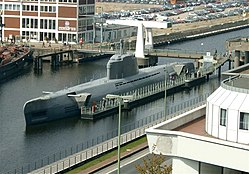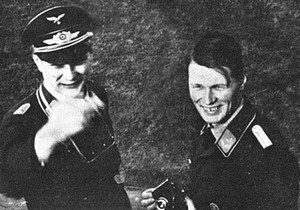
Almost everyone who has an interest in history has heard about the Secret Weapons, or the Wunderwaffe of Germany, the decisive elements for warfare which would turn the odds to favor the nation during its downfall nearing the end of World War II. The V-rockets caused fear among the English civilians destroying whole residental neighborhoods and the Me-262 aircraft was superb versus the Allied aircraft models. These threats were real and the Allied Forces had to deal with them on the road for the final victory. The Horten Brothers(Walter and Reimar picture above) were German pilots and aircraft designers with only a little of experience and formal training in aeronautical field. Still they succeeded in designing something absolutely revolutionary in this area. The jet-powered Horten-Ho 229 was radically invisible, a stealth fighter/bomber, a flying wing. If this aircraft model have had a mass production, it would have affected at least in the fight of the air superiority. Any existing German aircraft, even the Me-262 wasn't comparable of its capabilities vs. the Horten-Ho 229, not to mention the Allied aircraft models. The fight in the airspace would have looked like it was in 1939 when the Polish cavalry desperately fought against German armoured vehicles.
Amerikabomber
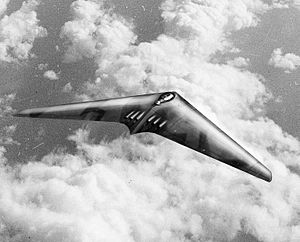
Amerikabomber was a German project which was left unfinished during the interwar years and never completed in the World War II. The plan was to obtain a long-range strategic bomber for the Luftwaffe capable of striking in the United States from Germany and fly back home, c.a. 11 600km. Various proposals were made, including the Amerika bomber to deliver German nuclear weapons. The Amerikabomber -project was launched already in 1938, but was abandoned as too expensive and advanced. It was not earlier than in 1942, the 'Amerikabomber' was re-introduced. 33-page plan was completed and submitted to the Reichsmarschall, Herman Göring. Now with more advanced technology, the German Luftwaffe mentioned in the plan using the Azores as a transit airfield, from there the Luftwaffe would be capable of to operate against the US East Coast.
The Horten H.XVII(picture above) was a Horten Brothers variant aircraft model. This intercontinental fighter/bomber was powered by six turbojets and had stealth charachteristics. This model would have carried sufficient fuel for transatlantic flights and was well-fitting for the 'Amerikabomber' -role. Unlike the Horten-Ho 229, the Horten 'Amerikabomber' was unbuilt.
Surviving aircraft
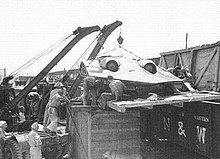
Very soon after the war ended in Europe, an American patrol was scouting in German countryside and from a barn they found two complete models of Horten-Ho 229 aircrafts. With a great urgency these models were dismantled, loaded in boxes or crates and transported to the US for closer observations.
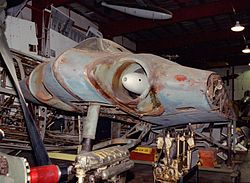
In the recent years the researchers and engineers have completed a reproduction model which is made like the original prototype parts of the Horten-Ho 229. There has also been a lot of testing. The results tell us that the drag, or the air resistance capabilities were absolutely perfect, the designing was advanced and reflects only a little of radar waves. The aircraft was originally coated with a mixture of saw -and coaldust making the model perform even better with its stealth capabilities. Although this aircraft wasn't completely invisible it could hide the radar enough while its design and silhouette could absorb the electromagnetic radiation. With this and having an advantage by its speed the Horten-Ho 229 would have been capable of to strike cities like London before detected or intercepted.
General characteristics
- Crew: 1
- Length: 7.47 m (24 ft 6 in)
- Wingspan: 16.76 m (55 ft 0 in)
- Height: 2.81 m (9 ft 2 in)
- Wing area: 50.20 m² (540.35 ft²)
- Empty weight: 4,600 kg (10,141 lb)
- Loaded weight: 6,912 kg (15,238 lb)
- Max. takeoff weight: 8,100 kg (17,857 lb)
- Powerplant: 2 × Junkers Jumo 004B turbojet, 8.7 kN (1,956 lbf) each
- Maximum speed: 977 km/h (estimated) (607 mph) at 12,000 metres (39,000 ft)
- Service ceiling: 16,000 m (estimated) (52,000 ft)
- Rate of climb: 22 m/s (estimated) (4,330 ft/min)
- Wing loading: 137.7 kg/m² (28.2 lb/ft²)
- Thrust/weight: 0.26
- Guns: 2 × 30 mm MK 108 cannon
- Rockets: R4M rockets
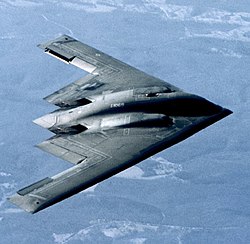
.png)
I end up with the pictures above, the left one is American B-2 Spirit, a long-range strategic bomber(first flight in 1989), the right one is the blueprints of German Horten-Ho 229(first flight in 1944). What do you think?


